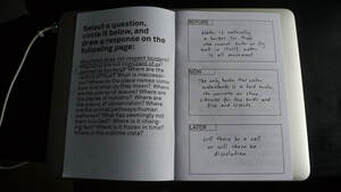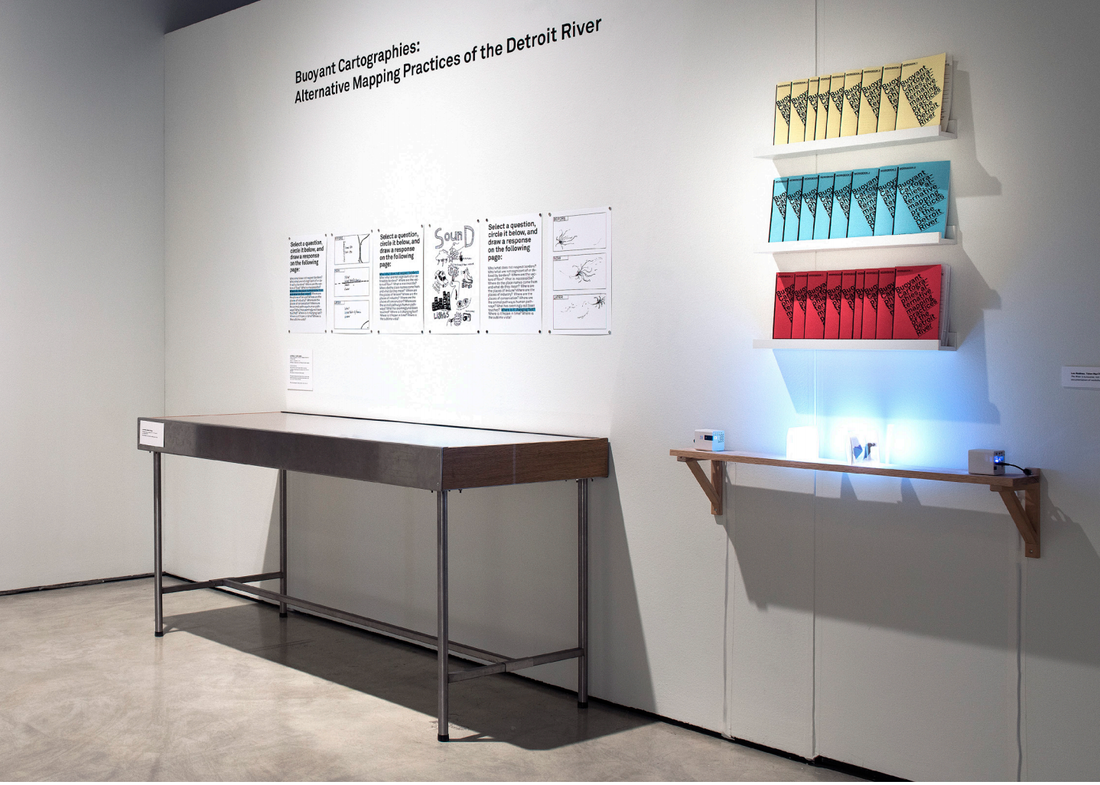Strata-Mapping the Detroit River Border

Buoyant Cartographies was a workshop co-hosted by the In/Terminus Research Group (Lee Rodney and Michael Darroch), Float School (Justin Langlois and Holly Schmidt), and the HPU, investigating the Detroit River border through strata-mapping and other methodologies. Some of the resulting workshop booklets, maps and videos were exhibited as part of “The Living River Project: Art Water and Possible Worlds” at the Art Gallery of Windsor (curated by Stuart Reid and Patrick Mahon)
from October 26, 2018 - January 29, 2019.
from October 26, 2018 - January 29, 2019.
Taien Ng-Chan published an essay on the Buoyant Cartographies workshop in Windsor-Detroit: erudit.org/en/journals/im/2019-n34-im05439/1070880ar/
Abstract:
The Hamilton Perambulatory Unit (HPU)’s strata-mapping framework is an experimental research-creation practice that focuses on how spatial meaning is created through a performative “stratigraphic” sensing and researching of a site. The international border between Detroit, Michigan and Windsor, Ontario makes an especially compelling site for experimental cartographies in light of the conflicts over borders and walls in the current political environment. At the southernmost tip of the Great Lakes system, we focused our attention on this river border as a material site and geopolitical space: it enabled us to investigate alternate possibilities for sensing and envisioning the layered and conjoined histories of this fluid space. The Ojibwe name for this location is waawiiatanong ziibi, “where the river bends,” suggesting a radically different spatial imaginary than the divided space that has been established through colonial and national histories. Experimental cartographies can thus help to develop alternate ways of experiencing such sites, an initial step towards decolonizing the spatial imaginary through a project of delinking. In September 2018, we conducted a workshop entitled Buoyant Cartographies, focusing on a performative and intermedial investigation into spatial meanings and their construction on Peche Island, which sits in the middle of the Detroit River. This was one of three Detroit River sites investigated in the workshop, with contributions from workshop organizers and HPU co-conspirator Donna Akrey.
Abstract:
The Hamilton Perambulatory Unit (HPU)’s strata-mapping framework is an experimental research-creation practice that focuses on how spatial meaning is created through a performative “stratigraphic” sensing and researching of a site. The international border between Detroit, Michigan and Windsor, Ontario makes an especially compelling site for experimental cartographies in light of the conflicts over borders and walls in the current political environment. At the southernmost tip of the Great Lakes system, we focused our attention on this river border as a material site and geopolitical space: it enabled us to investigate alternate possibilities for sensing and envisioning the layered and conjoined histories of this fluid space. The Ojibwe name for this location is waawiiatanong ziibi, “where the river bends,” suggesting a radically different spatial imaginary than the divided space that has been established through colonial and national histories. Experimental cartographies can thus help to develop alternate ways of experiencing such sites, an initial step towards decolonizing the spatial imaginary through a project of delinking. In September 2018, we conducted a workshop entitled Buoyant Cartographies, focusing on a performative and intermedial investigation into spatial meanings and their construction on Peche Island, which sits in the middle of the Detroit River. This was one of three Detroit River sites investigated in the workshop, with contributions from workshop organizers and HPU co-conspirator Donna Akrey.
Lee Rodney with Justin Langlois, Buoyant Cartographies: Alternative Mapping Practice on the Detroit River, August 31 - September 1, 2018.
